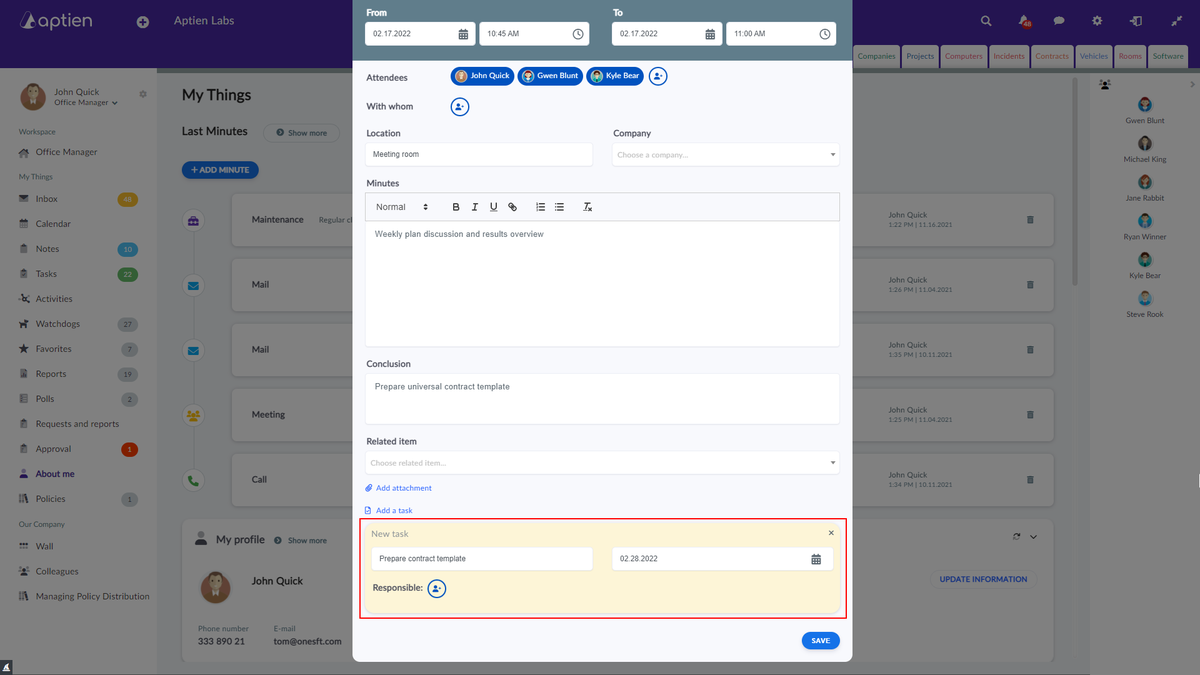What you Need to Have in the Meeting Minutes
Creating meeting minutes in Word may seem simple, but the way itself is not conducive to teamwork, and the tasks in such minutes are not easily managed. The goal is to keep your notes as simple as possible and not lose any important details. And so that you can easily find them later.
- a list of all participants in the meeting
- when the meeting took place
- the key topics discussed at the meeting
- the conclusions of the meeting.
- the tasks arising from the meeting
How to Replace Meeting Minutes Taken in Word
Minutes act as a document that touches on everything important that was said at the meeting
Problems with meeting minutes taken in Word
- Difficult to trace
- They are scattered in the mail, cannot be updated
- Difficult to track follow-up tasks
Tips on How Best to Create Minutes of Meetings With Suppliers
- Make a note of the key points on the agenda
- Record a brief summary of each agenda item and the outcomes you discussed.
- Try to limit each item to no more than three sentences and remember to seek confirmation from the room before writing down any plans or decisions.
Conclusions of the Meeting
If you come to specific conclusions at the meeting, highlight them separately so that they do not blend in with the other information in the minutes. Conclusions should be brief, preferably in bullet points, and should ideally be discussed in three individual conclusions.
Tasks From the Meeting at the End
Once you have written down your conclusions and points, be sure to create specific tasks to assign to yourself or other responsible parties. Tasks are automatically tied to the minutes and each one is clear who it is assigned to and what the due date is.
